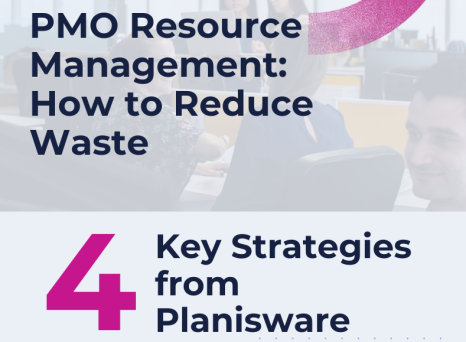This is a brief overview of the 13th annual Pharmaceutical Resource Planning and Portfolio Management conference in Philadelphia on February 4-6, 2020.
The pharmaceutical development project management world is quite small, which makes it easy to talk about the critical issues facing the industry openly and candidly. This proved to be true throughout the conference, where roughly 60 attendees interacted in highly engaging workshops and discussions revolving around three key themes:
- Risk-based planning
- Resource optimization
- Strong governance
It's no secret that most companies experience growing pains when trying to implement top-down project management and planning processes, such as Stage-Gate® and resource optimization. That's why this conference was so important: it was all about learning best practices, hearing lessons learned from past process implementations, and sharing new and innovative ideas for future implementations.
Approaches to risk-based planning
A big question asked at the conference was: When looking cross-project during portfolio analysis, do you use deterministic dates—dates determined by linked tasks—for your project plans or do you add some buffer or “risk-adjust” your dates based on the critical path?
Two companies in attendance mentioned using risk-based critical path reviews for portfolio analysis. They showed how they use Monte Carlo simulations to apply a risk to selected tasks—and then have a new critical path with a probability of success attached to it.
Monte Carlo simulations are used to anticipate the impact of risk and uncertainty in both prediction and forecasting models. The reason for using this simulation is simple: if a project leader knows the probability of their critical path occurring, then they can more accurately share submission dates, approval dates, and launch dates with senior managers. One company even said that had they used this approach in the first place, the might not have publicly shared upcoming launch dates so quickly (as the launch ended up being delayed by 18 months shortly after the dates were announced).
Successful methodologies for resource optimization
When companies try to come up with a true project plan —including all resources (FTE and budget)—they know they should spend more time planning FTEs but oftentimes don't.
A few companies explained that they have tested various methodologies, including functional planner and volunteer planning. A functional planner is a person that sits within a function and could be responsible for planning all internal and external resources (both time and money). Volunteer planning was the least supportive as that would mean that someone on a team has to do all of the planning for their colleagues in addition to their regular responsibilities. A functional manager is the leader of a team that is responsible for a project deliverable.
The most successful methodology was to have the functional manager for the teams review demand and capacity. Why? Because the team doing the work reports directly to the functional manager, who is then able to monitor the workload of all direct reports and allocate work to them accordingly.
This is still proving to be a tremendous area for development across the pharmaceutical industry. All companies are eager for tools and guidance to make the resource optimization process easier.
Stage-Gate remains one of the top best practices
The companies in attendance at the conference varied across all imaginable sizes and maturity levels. Yet despite these differences, almost all attendees agreed that a Stage Gate approach was the best practice, even if they did not already have a Stage Gate process in place. Here's why:
- The stages allowed for specific milestone targets and controlled future spend on projects, since a project would not continue to be funded or resourced until it reached those milestones.
- The stages also gave a picture to senior leaders of the ‘health' of their pipeline. Since attrition of projects is natural, one needs to ensure there are ample projects at various phases.
- Additionally, since there are typically capacity constraints amongst the various teams, the importance of project prioritization was discussed as part of a robust governance process.
New opportunities offered by Artificial Intelligence
At the moment, there is limited experience across the industry in planning with AI tools. However, it's an area of opportunity, especially as it relates to AI's promise to automate a number of project management tasks. The blend of hands-on management and data analytics powered by AI are driving companies to invest in these advanced planning tools. The only major concern shared by many is that AI could potentially give up too much control by making certain processes fully automated.
All in all, attendees were intrigued to learn what tools other companies were using to get products to market faster, cheaper, and better than the competition. They are hopeful that AI can potentially provide the edge they seek. (Just not quite yet).
Stage-Gate® is a registered trademark of Stage-Gate Inc.


